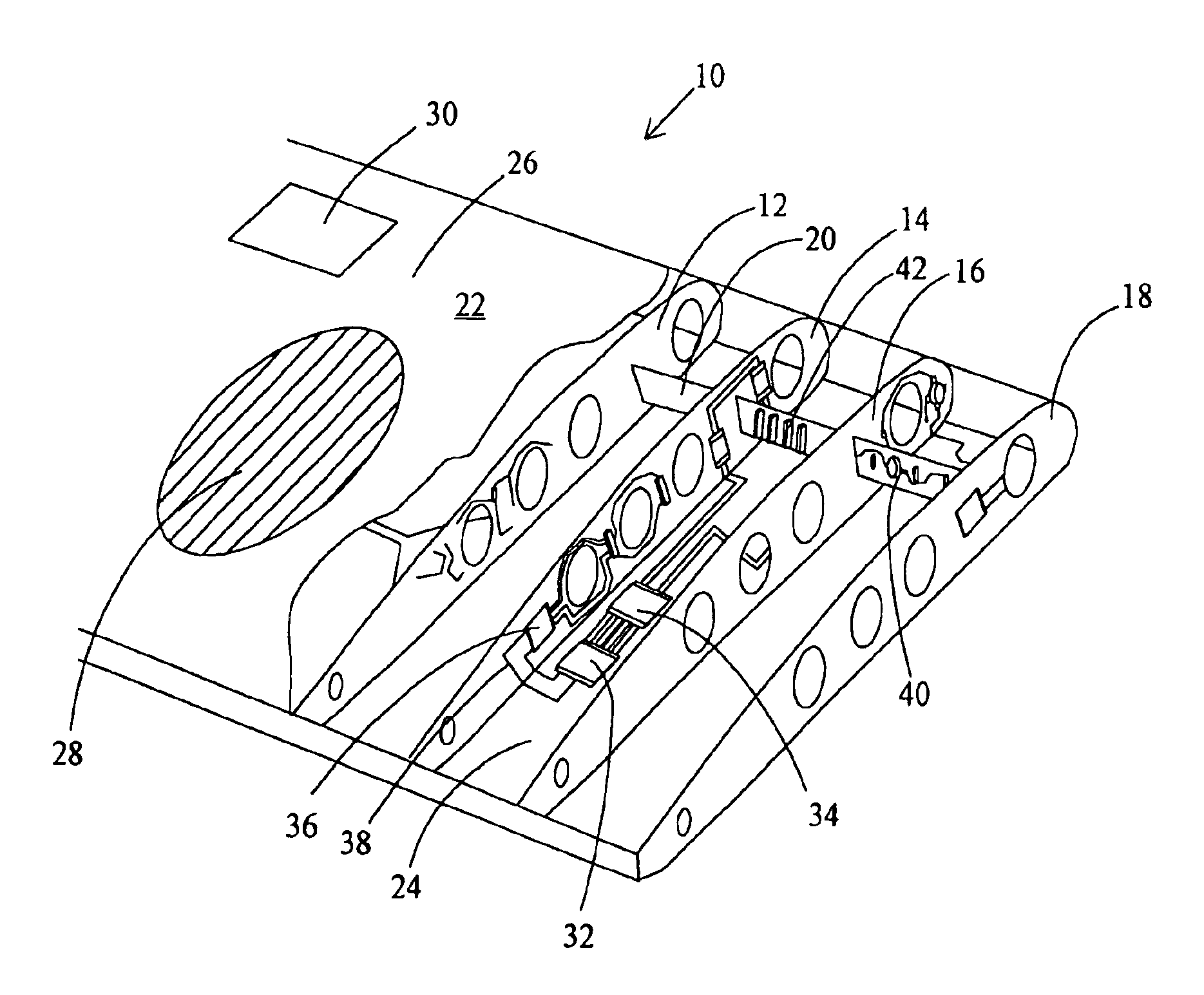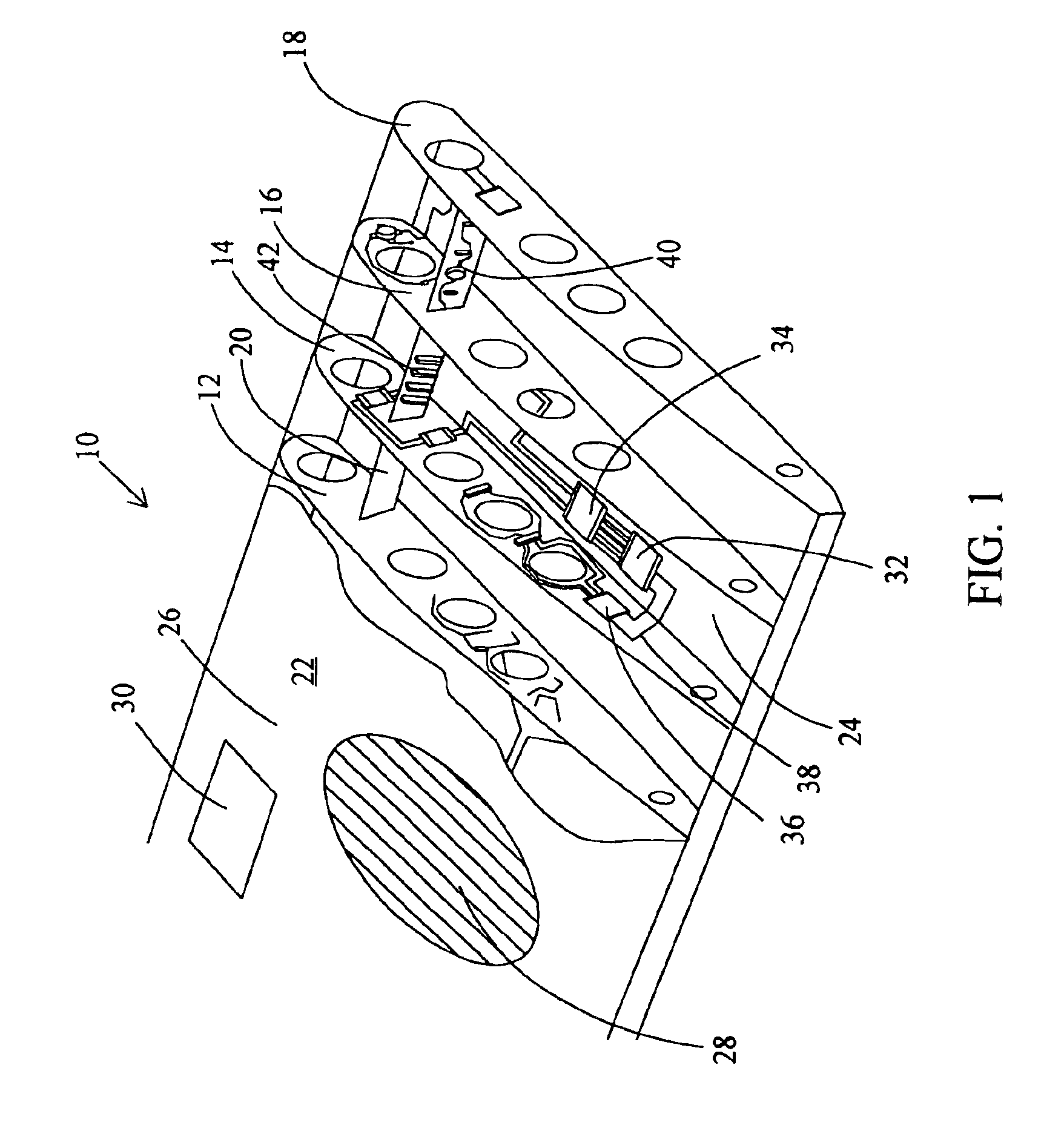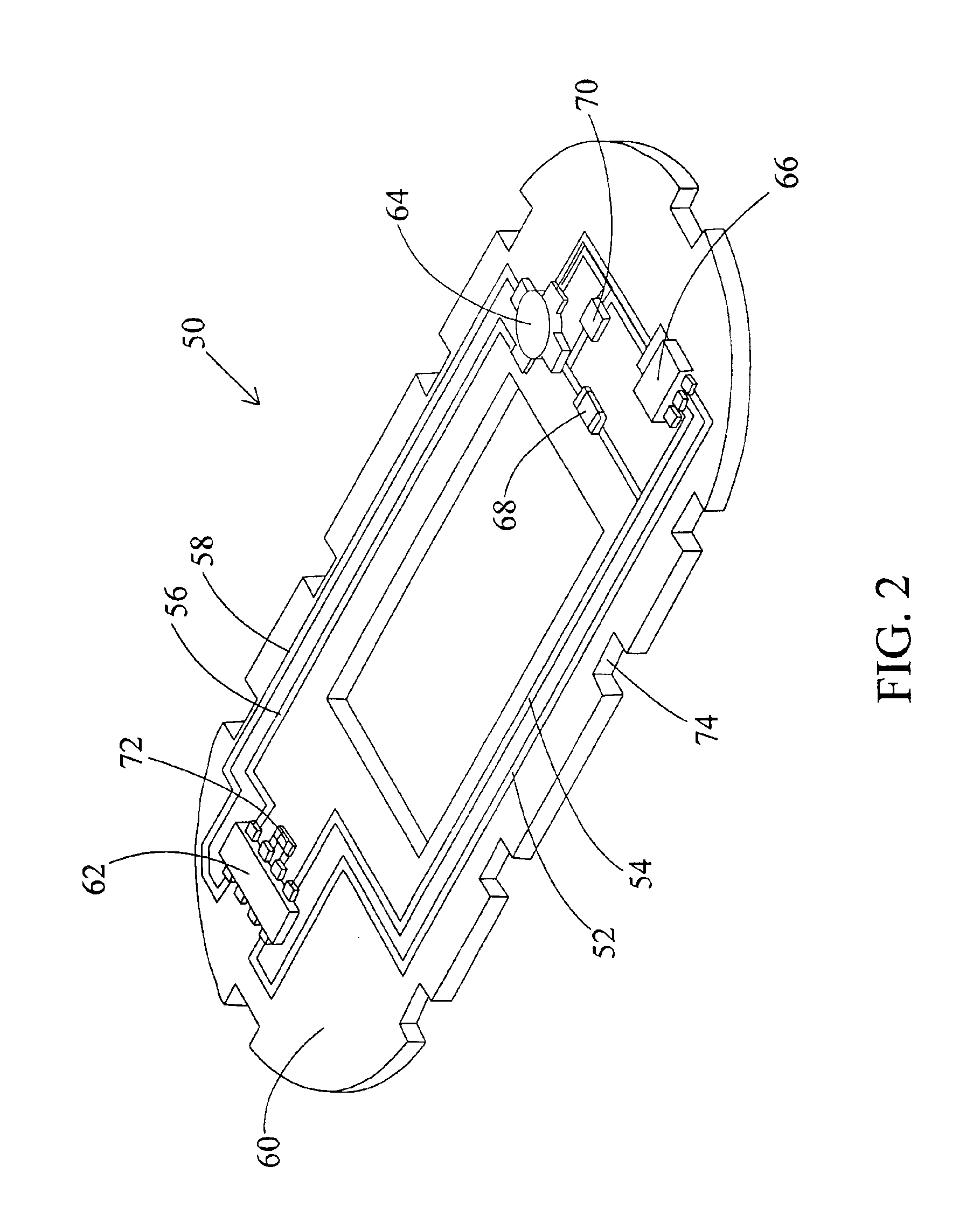Unmanned aerial vehicle apparatus, system and method for retrieving data
a technology for aerial vehicles and data, applied in the field of unmanned aerial vehicles, can solve the problems of inability to collect data remotely, inability to use such instruments, and large power sources, etc., and achieve the effects of increasing maintenance costs, transferring large amounts of data quickly, and inconvenient us
- Summary
- Abstract
- Description
- Claims
- Application Information
AI Technical Summary
Benefits of technology
Problems solved by technology
Method used
Image
Examples
Embodiment Construction
FIG. 1 depicts a cut-away perspective view of a wing according to the present invention. The wing, generally 10 includes ribs 12, 14, 16 and 18 that are mechanically connected by a spar 20. An outer-skin 22 covers the surface of wing 10. Outer-skin 22 has an inner surface 24 and an outer surface 26. Outer surface 26 can include very low profile circuits like a micro-patch antenna 28 and an organic light-emitting diode display 30. Inner surface 24 of outer-skin 22 can include higher profile circuit components such as integrated circuits 32 and 34. Wing rib 14 includes an integrated circuit 36 electrically connected by conductive trace 38. Wing spar 20 is shown having circuitry 40 including memory sockets 42.
FIG. 2 depicts an airframe structural element useful as a fuselage bulkhead, generally 50. Bulkhead 50 is fabricated according to the present invention. Circuit traces 52, 54, 56, and 58 are adhered to a substrate 60. A surface mount technology packaged integrated circuit 62 is el...
PUM
 Login to View More
Login to View More Abstract
Description
Claims
Application Information
 Login to View More
Login to View More - R&D
- Intellectual Property
- Life Sciences
- Materials
- Tech Scout
- Unparalleled Data Quality
- Higher Quality Content
- 60% Fewer Hallucinations
Browse by: Latest US Patents, China's latest patents, Technical Efficacy Thesaurus, Application Domain, Technology Topic, Popular Technical Reports.
© 2025 PatSnap. All rights reserved.Legal|Privacy policy|Modern Slavery Act Transparency Statement|Sitemap|About US| Contact US: help@patsnap.com



